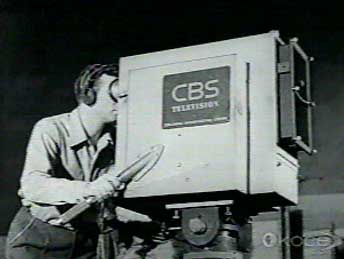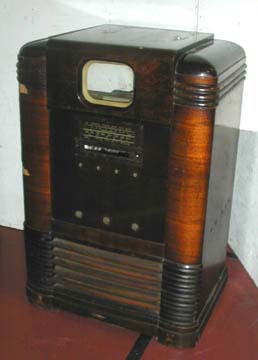|
Television in the 1940s was
all about one thing: development. During the war years, the United States government used their limited resources very
aggressively in terms of television research and development. They wanted to be able to use the technology for
many different things such as guided missile systems using an 'electronic eye' that broadcasted images to a remote location
where an operator was stationed. If the war had any lasting impact on television, it was through the development of
camera technology.
Many of these new cameras
(pictured below) were surprisingly smaller and just as efficient as those used in cinema. Companies such as RCA, who
were heavily invested in radio technology, began to explore the realm of TV. Advanced tube technology was one of the
areas that RCA developed and used to further the technological knowledge. These tubes were smaller and could be used
in different environments as opposed to what had been previously available.

With the war coming to a close, many could now turn back
to their old civilian practices. The technologies developed during the war helped to jumpstart the industry in the postwar
years. While there had been television stations before the war, the general public did not have access to them and America
was still on the edge when it came to this new form of communication. It was the same sort of fear that radio had experienced
decades earlier.
David Sarnoff, employee of RCA, sought to change this perception.
He wanted to make television a part of everyday life in America. He did this by working with his company to develop
many tubes, lenses, cameras, and other technologies that eventually led to the TV we know and love. For example, at
the end of the decade, RCA had three experimental versions of color TV sets in their production facility (pictured below).
Other major developments included the ability to record TV to broadcast later and 'On Air'/'Off Air' lenses.

By the end of the decade, the
industry was well established. Three major networks in the United States had already had successful lineups,
two of which are still major players on today's TV scene. Those three networks were NBC, CBS, and DuMont. The
public was beginning to see the real value of television as a medium of communication and many were setting
out to use that excitement to generate a profit.

|

